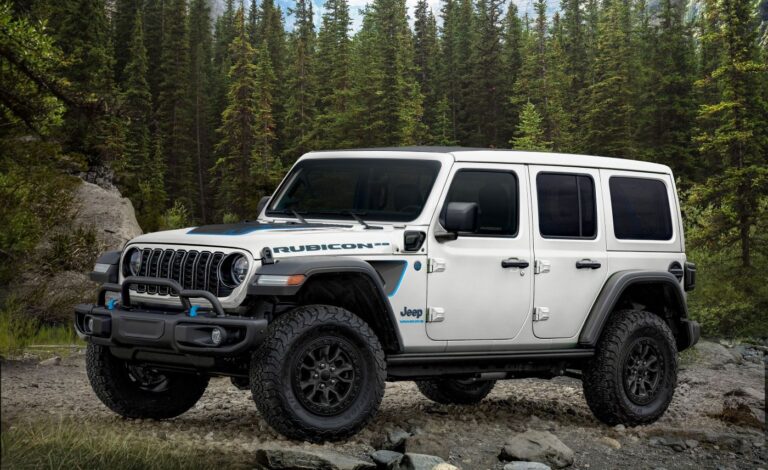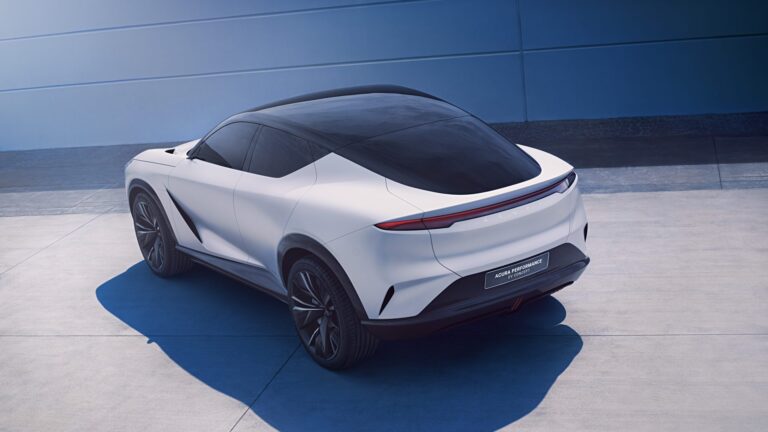The Mazda CX-50 has become a favorite among compact SUVs, with both turbocharged and non-turbo versions logging significant mileage in our evaluations, including a yearlong review.
Its sporty design, characterized by flared fenders and a low-profile greenhouse, is paired with impressive athleticism, making it a standout in its class. While the model boasts good features, its heavy steering, firm ride, and less-than-ideal fuel economy have been points of contention.
CX-50 Hybrid
Small SUVs remain incredibly popular, and with rising gas prices, hybrid models are gaining traction as efficient, practical alternatives to fully gas-powered or electric vehicles. Combining hybrid efficiency with the practicality of a compact SUV, the CX-50 Hybrid is poised for success.

Hybrid Powertrain and Engineering
The CX-50 Hybrid utilizes a Toyota-sourced hybrid gas-electric system instead of Mazda’s SkyActiv powertrains. It features “e-AWD,” where a rear electric motor operates independently of the front drivetrain. This motor can disengage for efficiency or provide additional traction when needed.
The system pairs a gas inline-four engine with two electric motors. One motor-generator acts as a starter and provides light electric assistance while recovering energy for the battery. The second, integrated into the transmission, can deliver torque or power the vehicle independently under low-load conditions.
The 1.6-kWh battery, placed under the rear seat, shifts weight distribution to a more balanced 45/55 front-to-rear ratio. The hybrid is slightly longer and taller than its gas counterpart, though second-row space is reduced due to the battery placement. Cargo capacity also drops to 29.2 cubic feet, compared to the gas model’s 31.4 cubic feet, but maximum capacity remains the same at 56.3 cubic feet.
Driving Experience
The CX-50 Hybrid retains the dynamic driving feel Mazda is known for. It handles corners with ease and delivers a composed ride, enhanced by the added weight of the hybrid system. Steering is responsive, though not overly sharp, and the brakes—while grabby at first—offer strong, confident stopping power. The hybrid system improves drivability, particularly in its “Power” drive mode, which maximizes electric assistance.
Inside, the hybrid remains quiet during regular driving but produces noticeable engine noise under heavy acceleration. The suspension’s stiffness is mitigated by the hybrid system’s weight distribution, creating a smoother ride compared to its gas-powered siblings.

Interior and Features
The CX-50 Hybrid’s interior includes a 10.3-inch center display heated front seats, and a wireless charging pad integrated into the center console. The higher trims feature upgrades like ventilated seats, a head-up display, and premium stitching for added refinement. However, the hybrid lacks parking sensors, which are available only on the gas Turbo Premium Plus model.
Pricing and Trims
The CX-50 Hybrid lineup starts with the Preferred trim at $35,390, which includes features like blind-spot monitoring, rain-sensing wipers, and a power liftgate. The mid-tier Premium trim, starting at $38,820, adds leather seating, a panoramic sunroof, and enhanced driver-assistance features. The top-tier Premium Plus, priced at $41,470, includes 19-inch wheels, power-folding side mirrors, and additional luxury touches.
Positioned between the non-turbo and turbo gas models, the CX-50 Hybrid strikes a balance in pricing while offering the best efficiency and range in the lineup. This hybrid’s ability to deliver impressive performance and economy, while subtly integrating Toyota’s hybrid technology, ensures it stands out in the competitive compact SUV market.



